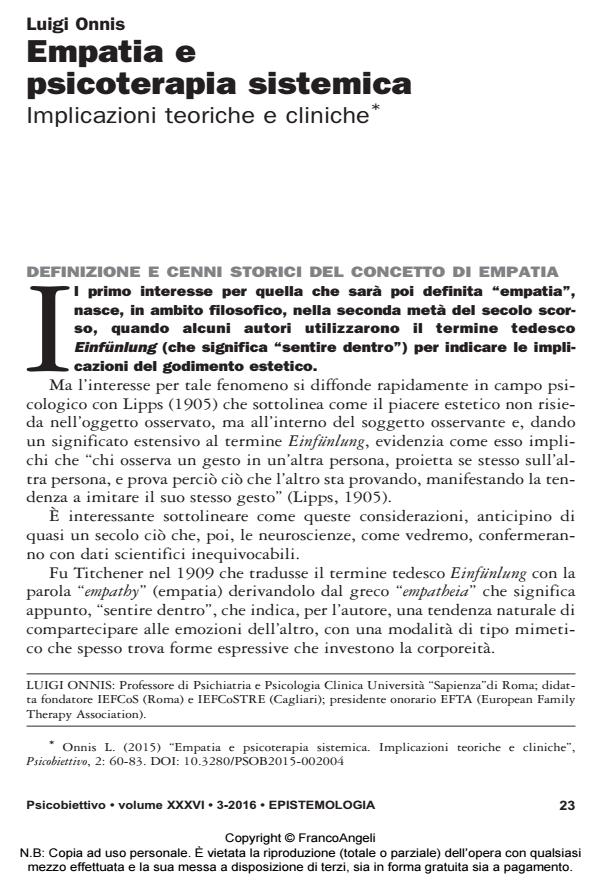Empatia e psicoterapia sistemica Implicazioni teoriche e cliniche
Titolo Rivista PSICOBIETTIVO
Autori/Curatori Luigi Onnis
Anno di pubblicazione 2016 Fascicolo 2016/3
Lingua Italiano Numero pagine 24 P. 23-46 Dimensione file 143 KB
DOI 10.3280/PSOB2016-003002
Il DOI è il codice a barre della proprietà intellettuale: per saperne di più
clicca qui
Qui sotto puoi vedere in anteprima la prima pagina di questo articolo.
Se questo articolo ti interessa, lo puoi acquistare (e scaricare in formato pdf) seguendo le facili indicazioni per acquistare il download credit. Acquista Download Credits per scaricare questo Articolo in formato PDF

FrancoAngeli è membro della Publishers International Linking Association, Inc (PILA)associazione indipendente e non profit per facilitare (attraverso i servizi tecnologici implementati da CrossRef.org) l’accesso degli studiosi ai contenuti digitali nelle pubblicazioni professionali e scientifiche
L’autore, dopo aver proposto una definizione e una breve ricostruzione storica del concetto di empatia, prende in considerazione i contributi scientifici che richiamano oggi grande interesse sull’empatia: quelli della psicologia dello sviluppo, attraverso, in particolare, l’importanza della intersoggettività e quelli delle neuroscienze, attraverso la funzione dei neuroni specchio. Emerge che l’empatia è un costrutto relazionale che implica una condivisione su base essenzialmente emozionale e affettiva, prima ancora che cognitiva, mediata da linguaggi impliciti, specificamente corporei. Queste caratteristiche relazionali dell’empatia si sposano perfettamente con la psicoterapia sistemico che pone l’importanza della relazione intersoggettività tra i suoi principi ispiratori e che valorizza l’uso di linguaggi analogici nel lavoro terapeutico proprio per favorire la circolazione emozionale tra terapeuta e famiglia. Viene presentato un caso clinico in cui l’osservazione dell’empatia tra i membri della famiglia e col terapeuta è favorita dal metodo analogico delle Sculture del Tempo Familiare. Nella parte finale vengono anche discussi i rischi di una sopravvalutazione dell’empatia come fattore che da solo può produrre cambiamento.
Parole chiave:Empatia; intersoggettività; neuroni specchio; terapia sistemica; linguaggi impliciti; sculture del tempo familiare.
Luigi Onnis, Empatia e psicoterapia sistemica Implicazioni teoriche e cliniche in "PSICOBIETTIVO" 3/2016, pp 23-46, DOI: 10.3280/PSOB2016-003002